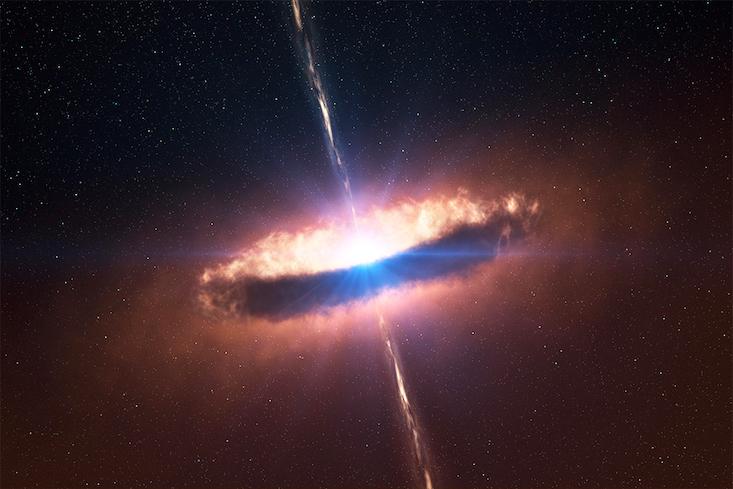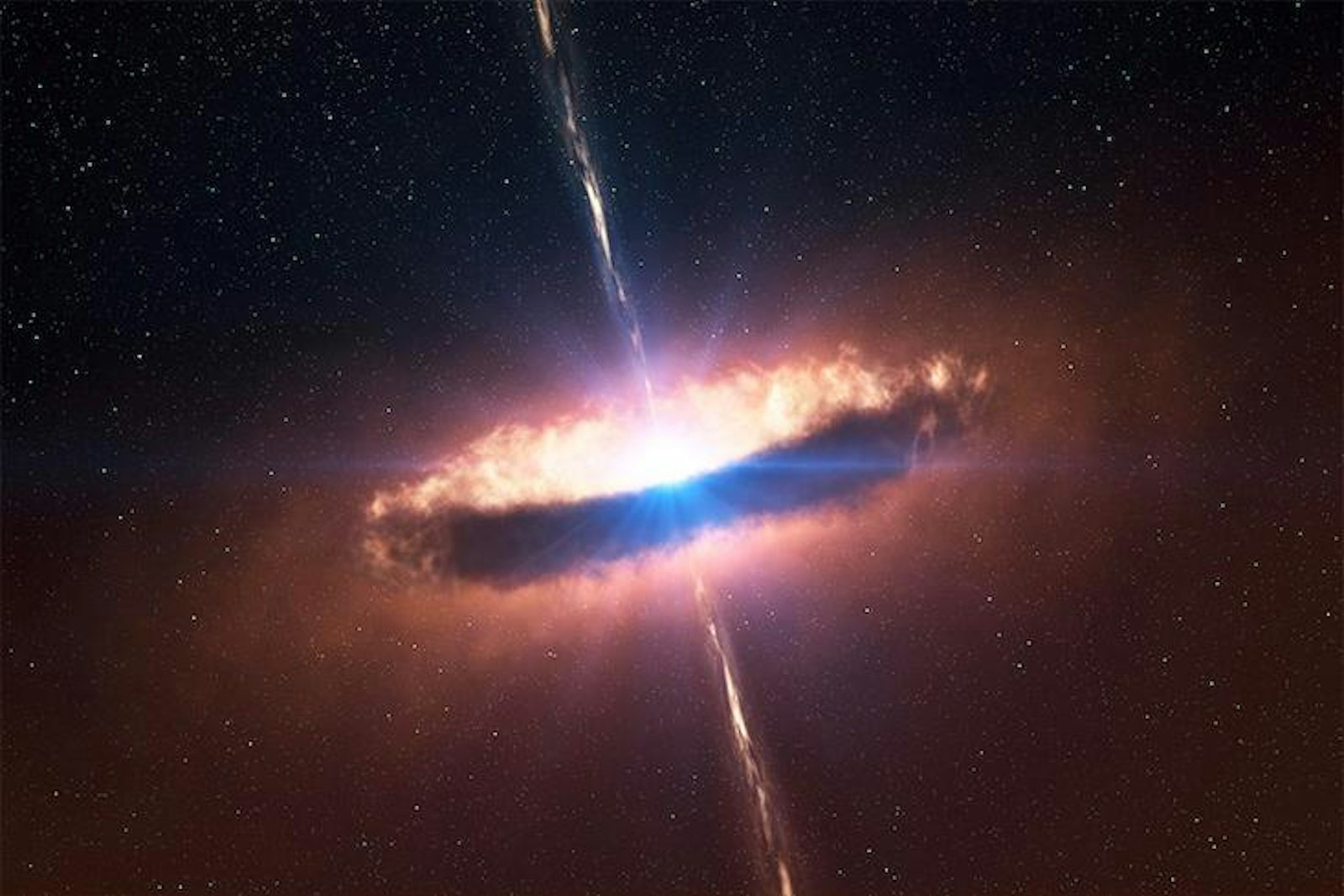Physicists speak of four fundamental forces that govern the interactions among the bits of matter that make up our universe. The strongest of these four forces, aptly known as the Strong Force, is so powerful that it can keep an atom’s positively charged protons from ripping the atom’s nucleus apart as their mutually repellent positive charges push them in opposite directions. The second fundamental force, electromagnetism, is 137 times weaker than the strong force, but its ability to cause bits of matter with opposing electrical charges to attract each other, and to cause bits of matter with like charges to avoid each other, is what gives unique three-dimensional structure to atoms, molecules, and even the proteins that form the building blocks of our body’s cells. At only one-millionth the strength of the strong force, the third fundamental force—the so-called weak force—changes quarks from one bizarre “flavor” to another and gives rise to nuclear fusion reactions.
The weak force deserves a better name: It’s actually the fourth force—gravity—that’s the weakling of the bunch. At only 6/1,000,000,000,000,000,000,000,000,000,000,000,000,000 the strength of the strong force, the influence of gravity on the interactions of protons, quarks, and other subatomic particles amounts to, well, about as close to zero as you can get. When I use the refrigerator magnet that holds up my kid’s school photo to lift the ring of keys on the kitchen table, the magnet easily overcomes the gravitational pull of the entire planet. At Subatomic Beach, gravity is the scrawny guy who’s always getting sand kicked in his face.
Gravity is the Charles Atlas of the cosmos. Gravity is a star-maker.
But the only reason gravity looks like such a weakling in comparison to the other fundamental forces is because we haven’t yet zoomed out to the scales of mass and distance that reveal gravity’s actual power to guide the interactions among bits of matter. For the change of perspective that can reveal gravity’s real power, we have to use a telescope, not a particle accelerator. When we’re studying the interactions of very small things that are separated by small distances, gravity is the only fundamental force that doesn’t matter. But when we’re studying the interactions of large things that are separated by great distances, it’s the only one that does.
Every time the mass of an object increases one-hundredfold, the influence of gravity upon its particles increases tenfold. Because very massive objects like planets and stars have no net electrical charge (the charges of all of their constituent bits more or less cancel each other), it’s the weakling gravity—acting across huge distances, always attracting, never repelling—that causes their interactions. And when an object gets really massive—roughly the size of 100 Jupiters—the gravitational forces acting on the atoms that make up that jumbo object can hold the object’s particles in a spherical shape even when weak force interactions among those particles have turned the center of the object into a nuclear fusion reactor. Gravity is the Charles Atlas of the cosmos. Gravity is a star-maker.

Natural selection, one of the fundamental processes of evolution, has something in common with gravity: A public relations problem. At one level of analysis, natural selection, like gravity, looks like a chump. When you’re looking up close at the tiny bits of stuff that go into making humans—the sequences of DNA that constitute the human genome—and how they came to be arranged in the manner that they are, natural selection doesn’t seem to have done very much. Other evolutionary processes, such as mutation, migration, and drift, seem to have exerted far more powerful influences on our genomes. For that matter, distinctly non-evolutionary events—one-off famines, freezes, floods, and fires—can exert a far more powerful influence on the fate of a species at any given point in time than natural selection can.
However, when you zoom out and look at evolution from a high-altitude vantage point, natural selection is the only evolutionary force that matters at all. This is because natural selection is the only evolutionary force that can produce design. Natural selection, like gravity, acts uniformly and consistently, through deep time, to sift genes according to one hard-and-fast criterion: It increases the prevalence of genes that are good at increasing their own rates of propagation and it reduces the prevalence of genes that are less good at increasing their rates of propagation.
As Richard Dawkins has described so brilliantly in so many different ways, genes take actions in the world that alter their rates of replication by cloaking themselves in really cool features and gadgets—mitochondria, ribosomes, specialized cells, arms, legs, eyes, ears, neurons, brains, beliefs, desires. Those features that increase the genes’ replication rates get conserved and elaborated upon. Those that reduce the genes’ rates of replication are shuffled off. As the result of aeons and aeons of a gene-sifting process that operates according to a single criterion—does this gene create phenotypic effects that speed up its propagation in the population, or does it slow its propagation?—organisms accumulate design.
None of the other evolutionary forces can produce this kind of complex functional design. The result of all of natural selection’s criterion-based gene-sifting is that organisms end up looking like geniuses for thriving in the environments to which they are adapted. Bacteria, birds, bees, bats, bears, boas—and even Bill and Betty—every one is a genius.
Natural selection, like gravity, is a star-maker.
Michael McCullough is a psychologist at the University of Miami in Coral Gables Florida, where he directs the Evolution and Human Behavior Laboratory. He studies the cognitive foundations of human social behavior. This essay is excerpted from his forthcoming book, Why We Give a Damn: The Enigma of Generosity in a World of Strangers (Basic Books). Follow him on Twitter @ME_McCullough.






























